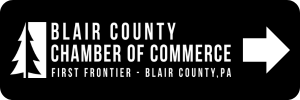I do not do global pandemics very well. I suspect anyone assigned economic development duties reacts poorly to their wrath. When navigating business closures, rocketing unemployment, emergency relief programs, and human health impacts, it is easy to lose track of time and space. As the Altoona Blair County Development (ABCD) Corporation team moves past the half-way point of 2020, we are taking stock and offering these mid-year observations.
No Annual Meeting
For the first time in the history of ABCD Corporation, we will not host an annual meeting. That gathering is a time to reflect and celebrate the previous year’s accomplishments. Looking back on 2019 in-the-midst of this storm seems almost irrelevant. But 2019 was not irrelevant. It was big. Blair County experienced steady growth in most key indicators – continuing a positive 5-year trend. The unemployment rate hovered around 4 percent. Employers were aggressively recruiting new talent from outside of the regional market area. And businesses were expanding. ABCD facilitated 20 business expansion projects resulting in more than $26 million in new capital expenditures. Those projects produced 96 news jobs and retained 268.
What’s Ahead
We already know that 2020 will not be good by most economic measures. But there are good things happening. The acquisition of the Slinky Toy Factory by Just Play, Inc. has reopened operations in Hollidaysburg putting the former production team back to work. Small tech start-ups like WorkTok are finding opportunity in this current market. Several other expansion announcements are expected this Fall. Most of the other projects that were slated for 2020 have simply been delayed until 2021.
Also, the pandemic appears to be reviving interest in rural mountain towns like ours, something we are planning to make the best of as we move through the remainder of this year and next. Together these trends suggest a rebound and rebirth that may be bigger than we expect.
Pandemics and Economics Don’t Mix
Blair County is a pretty-social place. We like our street festivals, concerts, sports, craft food and beer halls. Take them away and ouch, it hurts. Balancing life and livelihood during COVID has been tough. You simply cannot operate a successful business or event by limiting capacity, separating people and increasing costs all to ensure everyone is completely safe from something you cannot see. Yet we are trying to thread that needle.
All of it is creating big unknowns for many small businesses, especially independent restaurants, hospitality, boutique retailers and organized sports. While we may buy some time through emergency grants, in the end social distancing will not add up.
Our economy, our recreational venues, they depend on our ability to socially interact, confidently and without constraint. It requires human scale spatial economics – lot’s of people in relatively small spaces creating vibrancy, validation, unscripted conversation and new idea generation. Virtual meetings have kept us going up until this point, but they are no substitute for the real thing. Major corporations are already backtracking on the “work from home” option as a sustainable alternative. Which brings me to the next point.
Vaccine, Shot, Booster
Call it whatever you want, but no news is more important than when a vaccine of some type is made available. Most agree it is our best ticket back to “normalville.” There should be hourly briefings on that progress. Until there is a vaccine or commonly accepted treatment, we are required to wear masks and keep our distance. That response is framed as a social contract. When a vaccine becomes available, we then have a choice to receive it – the masks can come off. Last year as an example, there were between 39 million to 56 million cases of the flu. But we have a vaccine. While efficacy is important, the simple availability of a treatment upholds the social contract.
There is way too much at stake for this not to happen. Trillions of dollars of infrastructure (stadiums, schools, concert halls, convention centers, you name it) all designed to bring people together are not being used. Week over week that reality is eroding the very solvency of our economic foundation.
As I write, final human vaccine trials are underway. There is a push for availability by the end of the year. Mass distribution plans are in place across the country. The U.S. and many other countries are investing trillions of dollars towards the simultaneous development and manufacturing of several vaccine options. We have never seen the scale of Federal investment towards a single goal. It all leads one to believe that we will cross that finish line allowing humans to be human once again sooner than later. One final point.
This Too is Temporary
I have talked with a lot of folks over the past few months. Based on what I heard, my advice to policy leaders, those who are pushing mask mandates and other social distancing measures complete with penalties for non-compliance, is this – Remind everyone that this is temporary. Do not call it a new normal. Do not equate masks with shirts and shoes. Do not suggest that small business owners might be responsible for invisible contagion transfer among customers. And a few months of a pandemic does not an “era” make. Stop using that term.
If we need greater compliance to further control the spread, try reminding everyone that we will not always wear masks. We will not stand six feet apart indefinitely. Schools will not be shrouded in bubble wrap. There will be an end. Some might think that goes without saying – but saying it cannot hurt and might even help.
We are more than halfway through 2020. And that in-and-of itself is good news. We all must remain optimistic that we can stitch things back together again as we move through the second half of this year.


